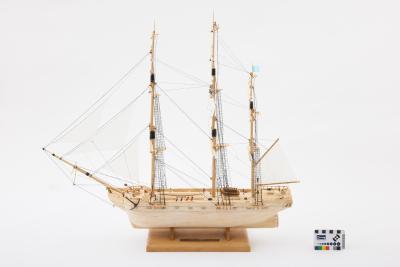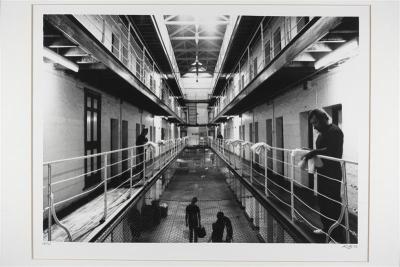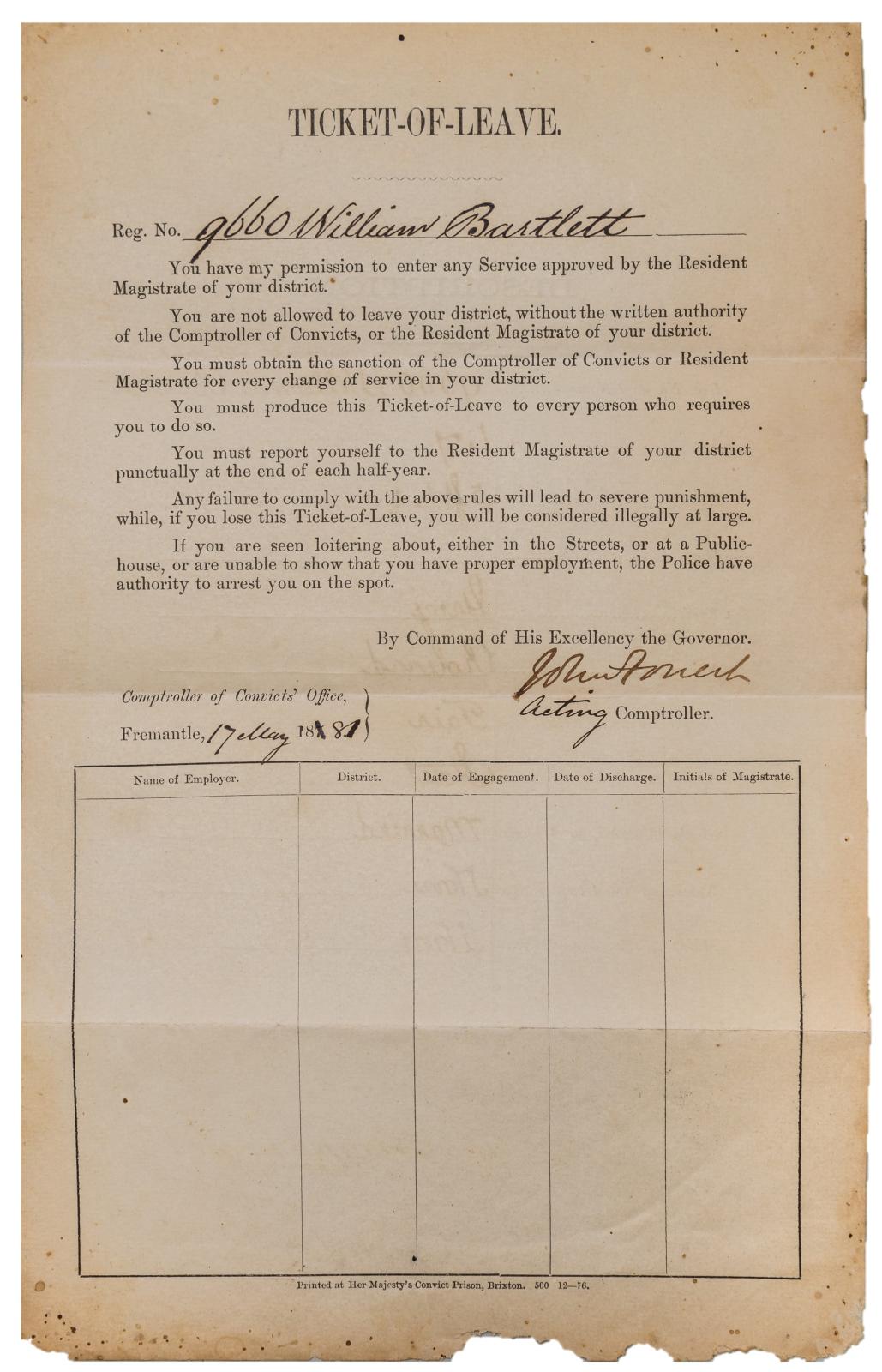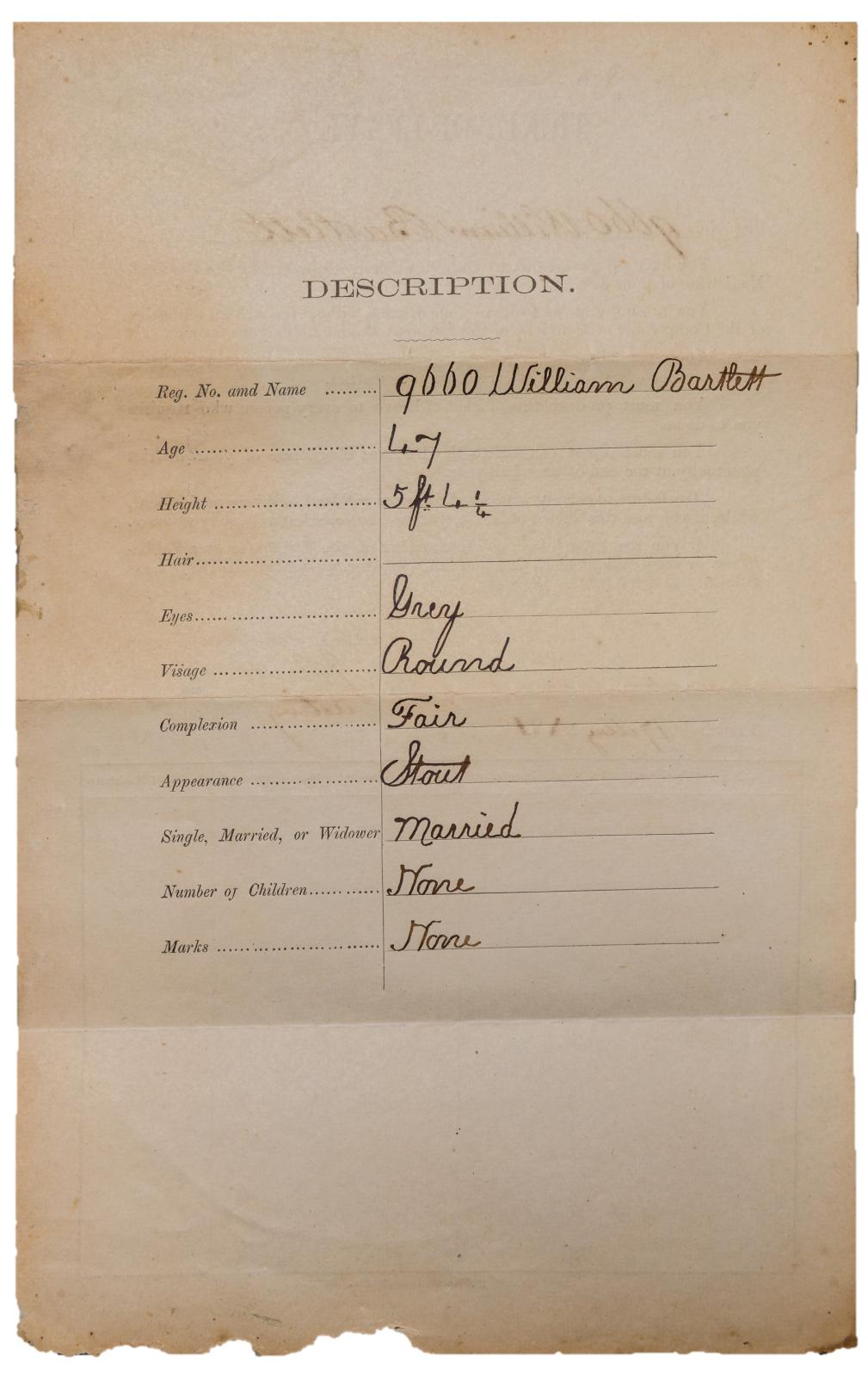TICKET OF LEAVE
1881Large, rectangular, yellow paper, Ticket of Leave for William Bartlett. Single sheet of rectangular, cream coloured paper, previously folded horizontally into four equal parts, creating three deep horizontal creases in the paper. Embossed in black ink along the top with, 'TICKET OF LEAVE'. Handwritten information on the front of the document includes the registration of convict, ' 9660 William Bartlett', dated '17 May 1881'. Printed at the bottom of the page in black ink is, 'Printed at Her Majesty's Convict Prison, Brixton. 500 12-76'. On the back of the page, printed across the top in black ink, is 'DESCIPTION'. Underneath are printed descriptive tiles, with handwritten notes next to each in black ink, denoting the convict’s descriptive features as follows, 'Reg. No, and Name 9660 William Bartlett/Age 47/Height 5ft 4 1/4/ Hair/Eyes Grey/ Visage Round/ Complexion Fair/ Appearance Stout/ Single, Married, or Widower Married/ Number of Children None/ Marks None'.
This document belonged to the donor's aunt Alexandrina Ethel Dowglass, who passed away in March 2017. The donor was clearing out her possessions and found this Ticket of Leave between the pages of a book in her house. It came from Alexandrina's husband Michael Dowglass, who received it from his brother Father Robert Dowglass, who was the parish priest in Geraldton.
This Ticket of Leave is believed to have been given to the local parish priest in Geraldton for safe keeping, either by William Bartlett himself or by the local police. It is understood that this Ticket of Leave was reissued to William after his rearrest, and was likely given to the priest for safe keeping as William was of no fixed abode. The parish priest for Geraldton between 1956 and 2002 was Robert Dowglass (1927-2002). It is believed that the Ticket of Leave was kept in the parish archives until Father Dowglass gave it to his brother, Michael Dowglass, the husband of the donor’s aunt, where the Ticket of Leave was found.
Details
Details
'Printed at Her Majesty's Convict Prison, Brixton. 500 12-76'
Born in 1834, William Bartlett was a horse dealer convicted of rape and sentenced to 15 years transportation. He arrived in Fremantle on board the Hougoumont, the last convict ship to arrive in Australia, in 1868. William served time in Pentoville Prison and Portsmouth, before he was transported to WA from Chatham.
At the time of his sentence, William was married to Ellen Bartlett, and they had one daughter, Alice Maud Mary Bartlett, who was born in 1861. After William was transported, his wife Ellen never remarried, and was a maid and dressmaker. Their daughter Alice died aged 14 years in 1875. Ellen died in 1886.
After being transported, William worked out of the Geraldton, Greenough and Oakabella areas for landowners including H. Woodman, F. Allendale, G. Baston. Mr. Bell, Pearson, Wiley, Hoskin ad Burges. While in the Murchison area William was caught on H. DeBurg’s property stealing a pig. The reason he gave was that he was hungry. William was later found wondering the streets of Geraldton with no means of support, when he was arrested for vagrancy and placed in Geraldton Gaol on 6 April 1894 for 8 days. He was then remanded to the Mt. Eliza Poor House. William died in the colonial hospital, of an embolism of the brain, on 16 April 1894, aged 65.
The Ticket-of-Leave system was first introduced by Governor Philip King in 1801. Its principal aim was to reduce the burden on the colonial administration of providing food from the government’s limited stores to convicts who were transported from Britain to Australia. Convicts who were deemed able to support themselves were awarded a Ticket-of-Leave. They could also be awarded for good behaviour, and permitted the holder to seek employment within a specified district. Holders where not, however, permitted to leave the district without the permission of the colonial government. Each change of employer or district was recorded on the convict’s Ticket.
Originally the Ticket-of-Leave was given without any relation to the period of the sentence a convict had already served. Some ‘gentlemen convicts’ or aristocratic men were issued their Tickets on arrival in the colony. By 1811, the need to first serve at least part of your original sentence was established and by 1821 regulations were introduced specifying the lengths of a sentence that had to be served before a convict could be considered for a Ticket. These were four years for an original seven-year sentence, six to eight years for a 14 year sentence and 10 to 12 years for those given a life sentence. Once the full original sentence had been served, a ‘certificate of freedom’ was awarded.
Ticket-of-Leave holders were allowed to marry or to bring their families across from Britain. They were also able to acquire property, but they were not permitted to carry weapons or board a ship. Convicts who observed these conditions until the completion of one half of their original sentence were entitled to a conditional pardon, which removed all restrictions except the ban on leaving the colony. Convicts who did not observe these conditions could be arrested without a warrant, tried without recourse to the Supreme Court, and would forfeit their property.
A Ticket-of-Leave had two physical components; the first known as the ‘Ticket proper’ was issued to the convict, and it was mandatory for them to carry it on their person at all times, which has resulted in very few original Tickets-of-Leave surviving into modern times. The second component was the ‘butt’, which was kept on file by the Colonial Government as a reference.
This Ticket-of-Leave has international significance, as a tangible link to a convict on board the Hougoumont, signifying the end of the convict era in Australian. This archive is in excellent condition, and is a rare surviving example of the pardon and release system employed in early colonial Western Australia. It has very high historic and social value for providing personal information of this particular convict, as an example of life after sentence and the method of social integration for released convicts into Australian society.
Other items from Fremantle Prison
- PLAQUE WITH KEYS AND PEEPHOLE
- Matchstick model of the Hougoumont
- Convict Establishment Baton
- Rocking Horse
- SET OF KEYS ON RINGS
- Convict Shirt Sleeve
- BEDSIDE CABINET
- SHIV
- Clay Pipe
- A FAIR GO FOR ALL: EDUCATION, 10.40AM
- 6.55AM MESSING OUT: DIVISION 1, EMPTYING MESS BUCKETS IN YARD SINK
- UNTITLED: DIVISION 3, 10.45AM, LANDING LAUNDRY














